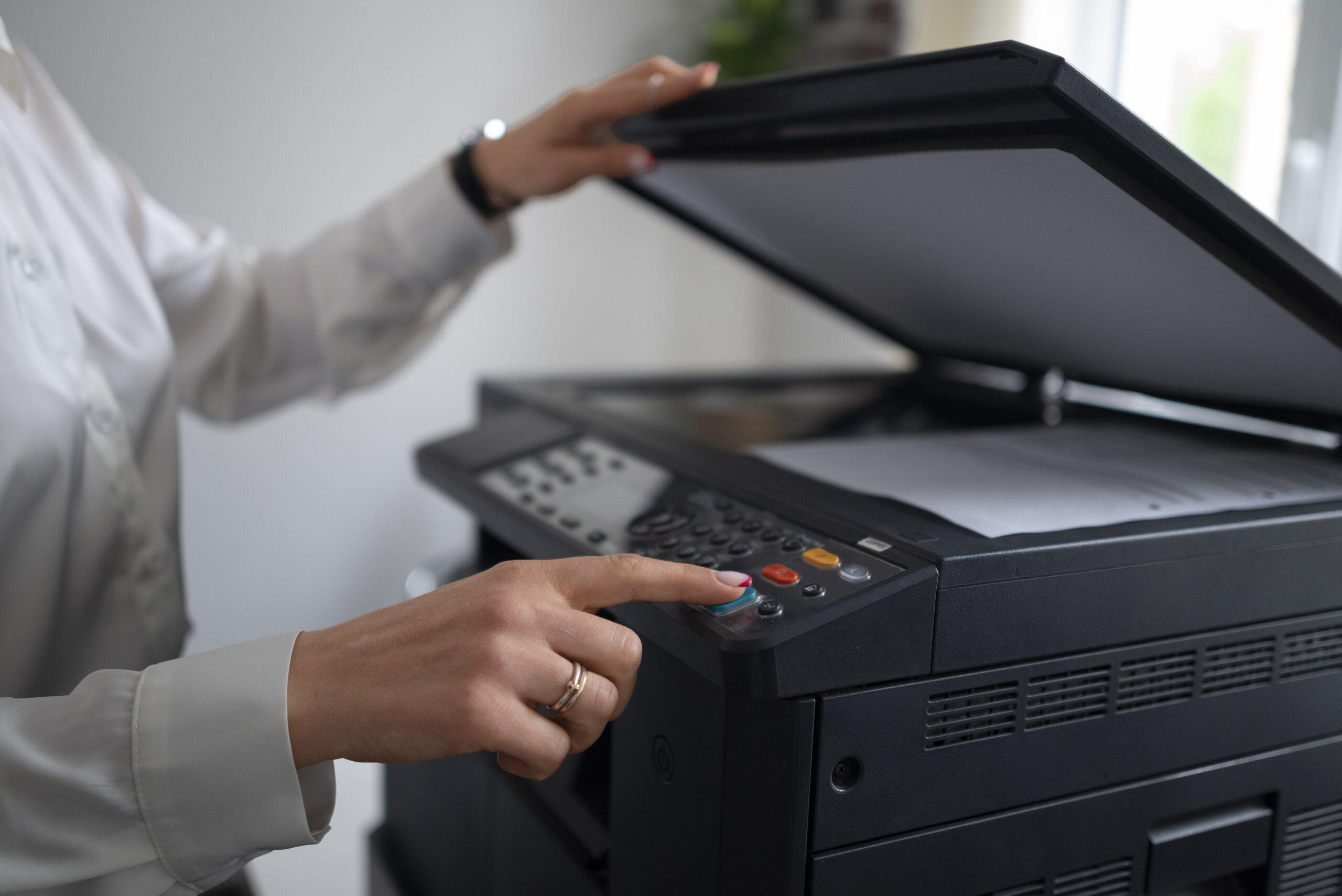Wireless Printing Explained: Print Seamlessly Across All Devices

Introduction
Wireless printing has become the default expectation: people expect to print from laptops, phones, tablets and cloud apps without finding a USB cable. The shift from cable-centric workflows to wireless has simplified many routines, but it has also introduced new variables — multiple network bands, different printing standards, device compatibility and security trade-offs.
This guide is practical and vendor-neutral. It explains the underlying technologies so you can choose the simplest method for your situation, then walks through step-by-step setup for the major platforms. You’ll also find robust troubleshooting, network tips and maintenance advice to keep printing reliable even as your Wi-Fi changes or your team grows.
Why wireless printing matters
Wireless printing matters because it removes friction. A single shared Wi-Fi printer serves many users without cables or desk rearrangement. For guests or BYOD scenarios, wireless printing lets someone quickly print a boarding pass or document without installing drivers. At scale, wireless printing reduces the need for multiple local cables and the time spent physically connecting devices.
But with convenience comes complexity: you must consider network reach, signal stability, printing standards and how devices discover printers. Understanding those trade-offs helps you design a system that balances accessibility with reliability.
Wireless printing technologies explained
There are several ways devices talk to printers wirelessly. Each has strengths and trade-offs. The common families are:
- Network (Wi-Fi) printing — printer joins the same network as devices; discovery via mDNS/Bonjour or LLMNR; supports full driver features.
- Wi-Fi Direct — peer-to-peer link between device and printer; works without an access point; great for ad-hoc prints but less suitable for multi-user setups.
- AirPrint (Apple) — Apple’s zero-config printing for iOS/macOS using mDNS/Bonjour; widely supported and simple for users.
- Mopria / IPP Everywhere — cross-vendor standards that simplify printing from Android and modern OSes without vendor drivers.
- Bluetooth / NFC — useful for media transfers or single-sheet printing from phones when Wi-Fi isn’t available.
- Cloud printing — printer or service connected to the cloud (Google Cloud Print was phased out; alternatives include vendor cloud print portals and third-party services).
How discovery works (very briefly)
Discovery protocols let devices find printers without manual IP typing. mDNS/Bonjour broadcasts a service on the local subnet advertising printer capabilities. When these protocols fail (blocked by guest networks or by router isolation), devices can’t see the printer even if it’s online. That’s why network design matters: discovery needs multicast allowed across the relevant clients.
When to prefer which technology
Use this quick guide:
- Home single printer, many devices: Network printing + AirPrint/Mopria for simplicity.
- Guest printing at events: Wi-Fi Direct or temporary SSID for attendees.
- Secure office environment: VLANs + static IP + IPP/print server with access controls.
- Mobile-first setups: Use vendor mobile apps and AirPrint/Mopria to avoid driver installs.
Common use-cases and which method to pick
Choosing the right method depends on volume, user types, and security needs. Below are practical scenarios and a recommended approach.
Small home office (1–3 users)
Recommended: standard Wi-Fi printing with AirPrint (for Apple devices) and the manufacturer app for Windows/Android. Keep the printer on the primary SSID so devices can see it easily. For occasional guests, enable Wi-Fi Direct or a simple guest SSID with limited bandwidth.
Small business (5–50 users)
Recommended: assign a static IP to printers, ensure the print server (if used) is reliable, and deploy Mopria/AirPrint support. Use a central share or print queue for heavy business workflows but keep local discovery active for ad-hoc printing from phones and tablets.
Large enterprise (50+ users)
Recommended: move to managed print infrastructure. Use print servers, proxies or enterprise MPS (Managed Print Services) with authentication (card release or PIN). Isolate printers on dedicated VLANs; use firewall rules and DNS entries for controlled access. Avoid open discovery on guest SSIDs to prevent accidental leaks.
On-site events / pop-ups
Recommended: Wi-Fi Direct or temporary hotspot networks for easy attendee printing. Keep passwords simple for temporary networks, and shut them down after the event to avoid lingering access.

Step-by-step: Windows (10 / 11)
Windows offers several ways to connect to a wireless printer: automatic discovery, IP address (standard TCP/IP) addition, or through vendor software. Below are detailed steps for each approach and tips for common pitfalls.
Method A — Add by discovery (recommended for most users)
- Make sure the printer is powered on and connected to the same Wi-Fi network as the PC.
- Open Settings > Bluetooth & devices > Printers & scanners.
- Click Add device; Windows will search for network printers using discovery protocols.
- Select your printer from the list and follow on-screen prompts. Windows will attempt to download and install drivers automatically if needed.
- Print a test page to confirm connectivity.
Tip: If Windows does not find the printer, temporarily disable the PC firewall to rule out blocking, or check that router multicast/mDNS is enabled.
Method B — Add printer by IP address (reliable when discovery is blocked)
- Obtain the printer IP: print a network configuration page from the printer or check the router’s DHCP table.
- In Settings > Printers & scanners, click Add device then The printer I want isn't listed.
- Choose Add a printer using a TCP/IP address or hostname. Enter the IP address and choose the correct protocol (usually Standard TCP/IP Port).
- When Windows asks for drivers, pick the recommended or use the vendor driver downloaded earlier.
- Finish the wizard and print the test page.
This method bypasses discovery entirely and is the most robust when networks isolate clients or block multicast.
Method C — Use vendor software
Many manufacturers provide “all-in-one” installers that find printers on the network and configure extended features (scan to PC, cloud services). Download the installer from the vendor site, run it, and choose network setup during installation. Vendor utilities can also update firmware and expose advanced controls not available via standard drivers.
Windows troubleshooting tips
- If you see multiple entries for the same printer, remove old ones and re-add the correct one.
- Use Devices and Printers (Control Panel) to access advanced driver settings if print jobs fail.
- Check the print spooler service — restart it if jobs are stuck in the queue.
- On corporate-managed devices, group policy may restrict discovery — coordinate with IT.
Step-by-step: macOS
macOS integrates printing tightly with AirPrint and Bonjour. If your printer supports AirPrint, setup is typically immediate.
Method A — Use AirPrint (fastest)
- Ensure the Mac and printer are on the same Wi-Fi network.
- Open System Settings > Printers & Scanners.
- Click the + button to add a printer. Look for your AirPrint-capable printer in the list and select it; macOS will use AirPrint drivers automatically.
- Test print from any app using File > Print.
Method B — Add via IP address (for non-AirPrint printers)
- In Printers & Scanners, click + and then select the IP tab.
- Enter the printer’s IP address, choose the protocol (IPP is common), and enter a name and location if desired.
- macOS may auto-select a driver; if not, choose the appropriate PPD/driver from the list or use the vendor PPD.
macOS troubleshooting tips
- Reset the printing system (right-click in Printers list > Reset printing system…) only as a last resort — this removes all printers and queues.
- For AirPrint issues, reboot the printer and the router; AirPrint discovery relies on multicast/Bonjour which can be disrupted by routers.
- Use the vendor utility for scanning or advanced features not supported by AirPrint.
Step-by-step: Android
Android printing has matured — modern devices support Mopria and native printing via the system print framework. Many vendor apps also provide features like scanning, cartridge status and cloud services.
Method A — Use built-in printing (Mopria / IPP Everywhere)
- Connect your Android device to the same Wi-Fi network as the printer.
- Open the document, webpage or image and choose Share > Print or tap the three-dot menu and select Print.
- On the print preview screen, tap the printer dropdown and select Add printer or choose the discovered Mopria/AirPrint-compatible printer.
- Adjust settings (copies, paper size) and print.
Method B — Vendor app (when features needed)
Install the manufacturer’s app (e.g., HP Smart, Epson iPrint). These apps often include scanning, firmware updates, and Wi-Fi setup assistants for printers that are not yet on the network.
Android tips
- Some Android OEMs ship with print services preinstalled; ensure the correct print service plugin (Mopria Print Service or vendor plugin) is enabled in Settings > Connected devices > Printing.
- For Chromebooks running Android apps, prefer native ChromeOS print dialogs where available.
Step-by-step: iOS (iPhone & iPad)
Apple devices favour AirPrint — it is typically the fastest and most reliable way to print from an iPhone or iPad.
AirPrint (recommended)
- Connect the iOS device and the printer to the same Wi-Fi network.
- Open the content you want to print and tap the Share icon or the three-dot menu and choose Print.
- Select the AirPrint capable printer from the list; adjust print options and tap Print.
When AirPrint is not available
Use the manufacturer’s app — many apps provide network setup assistants to add a Wi-Fi printer or to connect via Wi-Fi Direct. For temporary or guest printing, Wi-Fi Direct or QR-code assisted pairing (newer vendor features) may be available.
Step-by-step: Linux (Ubuntu, Fedora, etc.)
Linux distributions typically use CUPS (Common Unix Printing System). CUPS can discover printers via Bonjour/Avahi or be configured with a static IP.
Method A — Add via CUPS GUI (recommended)
- Open Settings > Printers or navigate to the CUPS web interface at
http://localhost:631. - Click Add Printer. If Avahi/Bonjour is running you should see network printers listed.
- Select the printer, choose the driver (PPD), and complete the wizard.
- Test with
lpstatandlprcommands if needed.
Method B — Add by IP
- In CUPS or the Printer Settings, choose to add a new network printer and supply the printer's IP (use ipp:// or socket:// depending on model).
- Provide the correct driver/PPD and finish the setup.
Linux tips
- Install vendor drivers if the printer has advanced features (scanning, duplex management).
- Use
avahi-browse -ato see mDNS discovery on the network.
Security and privacy considerations
Wireless printing introduces attack surfaces. Printers are networked devices with storage, onboard web servers and diagnostic ports — treat them as first-class network hosts.
Basic hardening checklist
- Keep firmware updated — vendors release security fixes periodically.
- Change default admin passwords and disable unused protocols (FTP, Telnet).
- Place printers on a controlled VLAN and restrict access to only required clients.
- Use encrypted protocols where available (IPP over TLS).
- Enable job authentication or secure release for sensitive prints (PIN/card release).
Guest networks and discovery
Guest SSIDs should not allow client-to-client communication. If guests must print, offer a dedicated print queue or a temporary Wi-Fi Direct network that expires after the event. Avoid exposing management ports (port 631, 9100) to the guest network.
Network best practices & optimisation
Networks are the arena where everything can either work beautifully or fail intermittently. Follow these practical guidelines to keep printing reliable.
1. Use a static IP or DHCP reservation
Assigning a fixed IP (or DHCP reservation) to printers prevents the driver/queue from pointing to the wrong device when DHCP leases change. It also makes it easier to configure firewall rules and discovery exceptions.
2. Reserve multicast/mDNS for printer VLANs
Discovery relies on multicast. If your network divides clients into VLANs, ensure that discovery is available to the VLANs that need it or provide DNS-based pointers to printers.
3. Prefer 2.4GHz for range or 5GHz for performance
Printers that are farther from the AP may benefit from 2.4GHz range; 5GHz offers faster throughput but reduced range. Avoid forcing clients to the wrong band — choose AP settings or band steering wisely.
4. Monitor signal and congestion
Use tools to visualise Wi-Fi channels and select the quietest channel. Interference from neighbouring networks or microwaves can cause intermittent disconnects and dropped jobs.
5. Quality of Service (QoS)
If print volumes are high and congestion is a problem, configure QoS to prioritise print traffic on the network, especially for high-value or time-sensitive jobs.
Troubleshooting matrix (start here)
Before panic: confirm the printer is powered, on the network and has no obvious error lights. If basics pass, use the matrix below to narrow the issue quickly.
| Symptom | Likely cause | Quick action | When to escalate |
|---|---|---|---|
| Printer not discovered | Multicast blocked or different subnet | Check network SSID, print config page for IP | Network isolation at router — contact IT |
| Print job stuck in queue | Driver mismatch or spooler issue | Clear spooler, reinstall driver | Corrupt driver or OS print subsystem |
| Partial pages / garbled output | Incorrect driver or corrupt job | Re-send job, use correct driver | Faulty network adapter or memory issue |
| Intermittent disconnects | Weak Wi-Fi signal | Move printer nearer to AP or use Ethernet | AP hardware fault or heavy RF interference |
| Mobile cannot print | App/plug-in not enabled or wrong SSID | Ensure device is on same SSID and plugin enabled | Vendor service or OS compatibility issue |

Printer care & optimisation (short checklist)
Good printing reliability is not only about networks — hardware care matters. Keep rollers clean, avoid dusty locations, and schedule regular firmware checks. Treat printers as shared assets: label them, record IPs, and post small usage instructions (e.g., "AirPrint = iPhone, Mopria = Android").
For fleet usage, maintain a simple maintenance log and replace consumables before failure—toner leaks and worn rollers are common causes of sudden downtime.
Advanced topics: static IPs, enterprise setups & print servers
When scale grows, simple ad-hoc setups break down. Enterprises typically centralise printing via print servers (Windows Print Server, CUPS, or cloud print gateways) which provide job accounting, access control, and failover. Use these advanced patterns when you need auditing, cost allocation, or complex access rules.
Print servers vs direct IP printing
Direct IP printing is simple and low maintenance for a handful of printers. Print servers centralise queues—useful for load balancing, driver management, and user authentication. Managed Print Services (MPS) add remote monitoring and automatic consumable replenishment for large deployments.
Authentication and secure release
For sensitive documents, use secure release flows: users send jobs to a held queue and then authenticate physically at the printer (PIN, RFID card, or mobile app) to release them. This reduces uncollected prints and exposure of confidential information.
